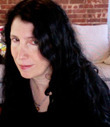Caroline Leavitt's Blog, page 106
September 25, 2012
Consider donating to and supporting Monkey Helper Training Program
The novelist Katharine Weber alerted me to this wonderful auction in support of Monkey Helpers: Help for the Disabled. I donated a novel and illustrated the title page, and I hope others will donate as well!
Helping Hands: Monkey Helpers for the Disabled is a national nonprofit serving quadriplegic and other people with severe spinal cord injuries or mobility-impairments by providing highly trained capuchin monkeys to assist with daily in-home activities.
The organization raises and trains these monkeys to act as live-in companions who, over the course of 20-30 years, will provide the gifts of independence, companionship, dignity and hope to the people they help.
Through the generous support of donors and volunteers - just like you - our monkeys are placed at no cost to our recipients.
When you bid on items, you change lives, renew hope, and bring a sense of independence and companionship to our recipients' lives.
Online Auction Open! Monkey Helpers' Annual Food Festivale - Saturday, October 13th!
Live EventSat Oct 13, 2012 6PM - 9PM EDT
Total Bids: 12Top Items1. Dinner and a Movie - National Amusements Theater and Buca di Beppo Restaurant2. Dooney & Burke: The Smith Bag3. $300 Gift Certificate from Zipcar4. Two Round Tickets to Nantucket and Bicycle Rental for 25. Two Adult Lift Tickets for Okemo Mountain Resort6. Isabelle Stewart Gardener Museum and The Elephant Walk7. Four Passes to the Institue of Contemporary Art and Dinner for 2 at Gaslight8. Private Behind the Scenes Tour for 4 People at the Monkey College9. Basketball - Four tickets to Boston College vs. Clemson 2/2/13 plus Bertucci's Certificate10. Brunch for two at Ceres BistroThe online portion of Monkey Helpers' Annual Food Festivale is now open. The auction will run from September 24, 2012 to October 10, 2012, with the live event taking place on October 13, 2012. All proceeds go to support our Training and Placement Program.
Item Pick-Up: All online only items can be picked up at Helping Hands: Monkey Helpers for the Disabled after October 14th unless otherwise noted. Those purchasers who request that the item be shipped to them must either provide a prepaid shipping label or prepay separately for the shipping (i.e. overnight, UPS, USPS, etc.). Shipping will be coordinated after you win the item. Note, shipping charges are not included in the bid price except where indicated. Any further questions, please contact erican@monkeyhelpers.org. View All Items Make Your Bid to Support our Monkey Helper Training and Placement Program!Now is your chance to not only get all the great items you want, but to do it knowing you are helping support our organization and mission.
We are the only non-profit organization in the world dedicated to breeding, training, and placing capuchin monkeys with individuals who have suffered paralysis due to a spinal cord injury, Muscular Dystrophy, Multiple Sclerosis, ALS, a stroke, or other mobility limiting conditions.Helping Hands : Monkey Helpers for the Disabled
Send book or auction donations to:
541 Cambridge Street
Boston, MA 02314
Phone: 617-787-4419 ext.105
Published on September 25, 2012 08:13
September 24, 2012
Maryanne O'Hara talks about Cascade, her prickly (and wonderful) heroine), obsessions, and so much, much more
I reviewed Maryanne O'Hara's eerie and unsettling Cascade for the Boston Globe, and it quickly became one of my favorite novels. Both a People and Library Journal Pick, it's been justifiably collecting high praise. For weeks after reading the novel, the image of a drowned city kept swimming in my mind, and I was anxious to have Maryanne on my blog. I'm thrilled and honored that she agreed. Thank you, Maryanne.
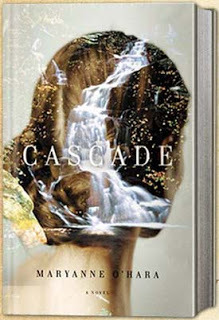
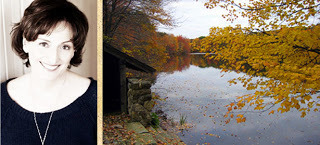
Where did you get the idea for Cascade? What was the research like? You've said you worked on the book for many years--what was that whole process like? Did you ever lose faith?Cascade developed from a few short story ideas I had—about artists in the 1930s, about the drowned town setting. I had no real desire to write a novel, so in the early days, it was easy to continue to write short stories while I immersed myself in the novel’s research. There was so much to study: the Great Depression, New York City during the New Deal era, art in Paris in the 1920s, art in New York in the 1930s, politics, reservoir construction, the build-up to World War II, theater production, Shakespeare’s First Folio. I watched hours of newsreels. I read old newspapers and magazines. When even my oldest, classically-trained artist friend wasn’t quite sure how paintings were painted in the 1930s, I hit upon the idea of reading “how to” art books published before 1935.I did always have this tiny nugget of faith that the book would someday be published, however humbly, but many times I doubted that faith, if that makes sense. And the doubt was like a trap door flying open. I don’t know where I would have gone, mentally, if I had tried everything and failed to publish Cascade. I did not want to have a “drawer novel.” I put too many years into it.What impressed me so much about the novel was how things were never quite what they seemed. What's your process like? Do you outline things in advance or were there real surprises for you? (Or course there are always surprises but you know what I mean.)No, I don’t outline in advance and I think that’s why it takes me so long to get my stories right. I experience a lot of backtracking, changing direction, exploring—yes, lots of surprises. Once I’ve got the plot/narrative set, I’m good, but my first drafts are not pretty. The initial struggle, for me, is to set down a strong enough narrative that will make a reader want to turn the pages, but the real joy of writing begins with revision. That is when I write for the close reader, the one who will notice the layers and subtle references, and hear the rhythm of the language. That kind of polishing takes time. It’s all about going deeper and revising, revising, revising.I do always comfort myself with the knowledge that if I close my eyes and imagine what would REALLY happen, I will write truth. And truth isn’t generally melodramatics, or a happy ending. As you know yourself.I also deeply admired the character of Dez. She's prickly, opinionated, and she doesn't always do what is right, yet you can't help caring about her deeply. Can you talk a bit about this?Dez was so hard to write! In the early drafts, people didn’t like her at all, and I didn’t understand why. It was as if they were saying they didn’t like my daughter. They said she was too self-centered, too callous, even though I certainly didn’t intend that, and wondered why they couldn’t see her wholeness. But originally I’d written the first drafts in first-person, present tense. When I realized that this general dislike of Dez existed across the board with readers I respected, I rewrote the entire manuscript in third-person past tense, and that turned out to be the key. Third-person was remarkably freeing. I was able to be more objective, and figure out how to convey her complexity and goodness and decency. She finally came fully alive in the way that I had originally intended. I’m finding, not surprisingly, that some readers love her, and some don’t quite like her, but they all agree that she’s human, and that they can understand her.What's obsessing you now and why?Ooh, I’m always obsessing about something. I have always had an obsession about the mystery of our existence within time, which certainly is part of Cascade. The next novel is a story of two love triangles, past and present. The story meditates on time and memory and the secrets people keep, and how, while keeping them, there is often a desire to reveal those secrets, or leave clues that someone can unravel after they are gone. I wrote a short story, "Beyond the Border of Love," that dealt with this idea. But the novel is an entirely new cast of characters, set within a broader context, and moves back in forth in time between the present day and 1960s Prague.What question should I be mortified that I forgot to ask?Well, I’d love to answer this: What has been best about seeing Cascade in print?I had no idea how much I would adore hearing from readers. I love hearing “I couldn’t put it down” and “It gave me a lot to think about.” Just like in the book, the drowned town idea is connecting with people everywhere, and I’m not surprised. Drowned towns happened everywhere—all over the country, all over the world.As for Dez, so many men and women are saying they can relate to her struggle, and I’ve experienced a poignant thing, a couple of older women who have leaned in close to whisper, “I always wondered what would have happened if I had left.”In a feature that the Boston Globe wrote, the reporter mentioned how I’d said that from the very beginning, I’d had a Seamus Heaney line running through my head as I wrote Cascade: You lose more of yourself than you redeem/Doing the decent thingI had quite a few men remark on that line. They said it hit them hard.I liked hearing that. Because I want them to know that Cascade explores, "What is a right choice?" "And who decides what is right?"One of my favorite of my own short stories, "Ocean City," is a man’s story. And the new novel has a male main character. I think it’s hard to be a man in our culture, and I want to write about that.Watch the beautiful Cascade BOOK TRAILER:
http://www.maryanneohara.com/cascade-trailer/
Published on September 24, 2012 07:48
September 19, 2012
We Represent the 47%: Writers' letters to Mitt Romney
The sublime Julianna Baggott had an idea: start a website where writers could write letters to Mitt Romney, explaining our lives to him. We are the 47 percent of the people that Romney believes are selfish, entitled freeloaders grabbing at health care, food and housing, and he has said that the government's job "is not to worry about those people."
And who are those people, really? Some are unemployed. Many lost their jobs because of the economic crisis. That 47% is made up of seniors, students scraping by on loans, soldiers injured and on disability. As Julianna so eloquently says on the site, Mitt Romney's 47% includes "those we love. His 47% includes those who work hard and who continue to dream hard."
Richard Russo, Julianna Baggott, myself, Seth Brady, Jennifer Finley Boylan, Erin Belieu, Erin Murphy--and coming up Cheryl Strayed and more--all are sharing our lives and our voices with you on this site. We feel we represent America--an America Mitt Romney doesn't really know or understand.
To submit your own letter to Mitt Romney about how you represent, once represented, or want to honor someone who has represented the 47 percent for possible inclusion on the website, send to davegwscott@gmail.com.
And who are those people, really? Some are unemployed. Many lost their jobs because of the economic crisis. That 47% is made up of seniors, students scraping by on loans, soldiers injured and on disability. As Julianna so eloquently says on the site, Mitt Romney's 47% includes "those we love. His 47% includes those who work hard and who continue to dream hard."
Richard Russo, Julianna Baggott, myself, Seth Brady, Jennifer Finley Boylan, Erin Belieu, Erin Murphy--and coming up Cheryl Strayed and more--all are sharing our lives and our voices with you on this site. We feel we represent America--an America Mitt Romney doesn't really know or understand.
To submit your own letter to Mitt Romney about how you represent, once represented, or want to honor someone who has represented the 47 percent for possible inclusion on the website, send to davegwscott@gmail.com.
Published on September 19, 2012 18:52
September 18, 2012
John Kelly talks about The Graves Are Walking, the horrifying saga of the potato famine, research, and how the politics of the famine are disturbingly similar to what's going on with the Far Right in our country today
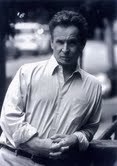
John Kelly's The Graves Are Walking: The Great Famine and the Saga of the Irish People, has already been showered with praise from President Bill Clinton, Douglas Brinkley, Adam Hochschild, Amanda Foreman and more. Early reviews are equally spectacular. USA Today says, "Kelly brings the horror vividly and importantly back to life. The result is terrifying, edifying and empathetic. To read this book is to feel the Famine's chill."
New York University's chair of Irish Studies, Professor Joe Lee, one of the two or three most distinguished scholars of Irish history in the world, ranked this book on par with Cecil Woodham-Smith's The Great Hunger, which is the gold standard book on famine. And most importantly, even though the Irish Famine was an English-Irish catastrophe in the mid 19th Century, the philosophy behind it was shockingly similar to the economic ideas of our country's Far Right today. It is my incredible honor to have John Kelly on my blog today.
Can you talk about the title?
The title comes from William Butler Yeats's play, The Countess Cathleen. In the first scene, one of the characters says:
They say that now the land is famine struck The graves are walkingI choose it as title for two reasons. One, It's a haunting image in and of itself, and two, I thought it would give the reader a feel for what I was trying to do in the book, which was to convey a sense of what the famine looked like and felt like for the people who lived through it.What was the research like? What surprised you?
The research was exhausting. Combined, I estimate I read about 8,000 letters, government documents, and contemporary newspaper accounts. However, the hardest part was the writing. How do you turn all that documentation into a compelling narrative history for the general reader? There were days I was so frustrated, I felt like taking out a restraining order against the book.
What surprised me is how sophisticated the international economy was in the 1840s. With nothing but letters and ships, merchants were able to guide an economy that stretched from the Ukraine to the Ohio Valley. It was a remarkable achievement.What's obsessing you now and why?The famine was caused by a kind of fundamentalist capitalism. The starving peasantry were required to pay for their own relief food because the British believed that giving away food for free would foster a culture of dependency, and private merchants were put in charge of feeding Ireland because the British also believed the free market could do the job more efficiently than any government agency. This fairy tale did not work out very well in reality. Given a monopoly on the food market, merchants ruthlessly raised prices until food became unaffordable to the peasantry, and, as a result, famine developed and claimed over a million livesWhat's obsessing me now? The resurgence of fundamentalist capitalism There are a significant number of Americans who want to re-introduce this kind of tooth-and-claw capitalism to the United States. I think that is a grievous mistake.What question didn't I ask that I should have?Was the famine a deliberate act of British genocide, as some in Ireland continue to maintain? I don't think it was. The British officials who oversaw famine relief were not Hitlers or Eichmans. They were wakeful-minded, God-fearing, and, by their own lights, well- intentioned men and that's what makes them so depressing.
If the famine had any enduring lesson to teach, it is about even the best can do, when the best loose their way and allow religion and political ideology to traduce reason and humanity.It sounds a lot like today.
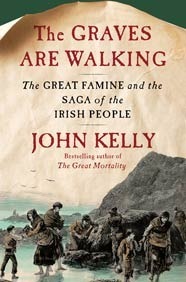
Published on September 18, 2012 14:04
David Gardner talks about illustrating Sarah Gives Thanks, research, r-rated fiction and g-rated drawings, the Wizard of Oz, and so much more

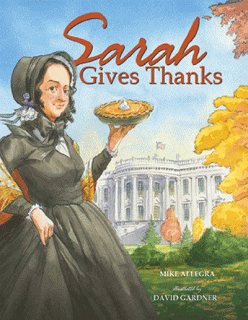
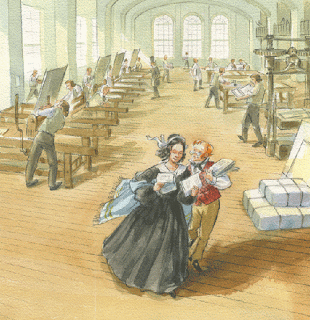
Although I've written kids' books, primarily in the Wishbone series, I really know nothing about what goes into illustrating them--and I find it fascinating. So I'm thrilled to have writer David Gardner here to talk about the book he illustrated, Sarah Gives Thank, about how one ahead-of-her-time woman brought Thanksgiving to our country. Thanks, David!
So, I know you write adult novels. What do you have to do to get into the mindset of illustrating books for children?
As a kid, I was always drawing or hunched over my coloring book with a fistful of Crayolas, so its pretty easy for me to change the channel and get back into that mindset. I'm not always thinking about my audience when I write for adults, so I do have to sometimes consciously remind myself: Hey, you're drawing to appeal to a second-grader. Oh, and teachers, librarians, moms, dads, grandparents, who actually buy and read these books to kids most of the time. Good thing I was raised to be a people-pleaser.
I'm lucky in a way: By default, my "child's brain" -- which is in charge way too much of the time, if you ask my partner -- seems to think in pictures. When I'm writing adult fiction, my middle-aged "adult brain" kicks in naturally and delivers scenes, characters, dialogue. But when I illustrate for children, I ask myself, OK, what would I have liked to see when I was six or seven?
When I'm stuck on a picture, it helps to ask: How would a child see this scene? I'll try kid's-eye-view sometimes, a low camera angle. In the case of this book, I included Sarah Hale's five children whenever possible, and I love that Mike Allegra, the author, included Sarah as a young girl. Kids want to see other kids, not some middle-aged lady the whole time.
I'm not sure why, but while my fiction tends to come out R-rated (else I get bored), my drawing and painting has always tended toward a G-rating. But the adult fiction writing does inform the illustrating. For example, Mike started and ended the book with Sarah's family celebrating Thanksgiving, a lovely touch, emphasizing the arc of Sarah's life. I realized I could emphasize that movement in the illustrations by repeating the same composition from the beginning of the book at the end: Sarah's holding a baby in both pictures, but the final image takes place fifty years later, and she's holding her grandchild.
I'm really curious about the process. How does it work? Do you have the words per spread and just come up with artistic ideas to go along with them? Do you collaborate with the author?
I didn't collaborate directly with Mike. In fact, we weren't even in contact until the book was finished. That's typical with picture books. It can cause friction when an author has ideas set in concrete about how their story should be depicted -- of course, this is their "baby"! -- but that can slow things down and cause bad feelings. This is like making a film, its a collaboration. My job as the illustrator is to bring my own vision to the table.
To get started, the Art Director at Whitman, Nick Tiemersma, sent Mike's manuscript to me. I was impressed by the way Mike told Sarah Hale's story, with humor, but respect, and his structure was exciting, moving back and forth in her life, not straightforward. Images popped up in my mind right away. I love history, depicting different periods. I jotted and doodled in the margins. I read it several times, sketching out quick visual ideas, noting themes, verbal cues, that popped into my head.
Often, text placement is up to the illustrator, but word placement on each spread was handed to me on this one. but Nick broke the text down, placing the words on each page, making brief suggestions on what to illustrate on each spread. Text placement is crucial in a picture book. Like music, it's best when it has a flow, a rhythm. It can make or break an emotional moment. Emotions are critical -- what the characters are feeling, and what emotional response the story wants to elicit from the reader.
Just out of curiosity, I asked Mike about his role before I came on board. Here's his response:
MIKE ALLEGRA: When I submit a manuscript for consideration, I indicate where I want page breaks. Although Sarah Gives Thanks was trimmed a bit after I submitted the story, my page breakdown ideas remained largely intact. The editor, Kristen Otsby, and I saw eye-to-eye on a lot of things and that was one of them.
As for the illustrations, Kristen wrote up a verbal description of what she wanted to see on each spread and shared this info with me. Her ideas were excellent for the most part; in most cases I only suggested little changes.
On several occasions Kristen was stumped as to what should go on a page and she asked me to think something up, which was cool. For one spread she and I couldn't come up with anything at all -- so she said, "David'll come up with something." And, boy howdy, did you; it turned out to be one of my favorite illustrations in the book!
What kinds of research do you do to get all the details just right?
Tons! Until the deadline looms dangerously close. That's the only thing that stops me. I started with a written biography on Sarah Hale I found on Amazon. It only had a few pictures, but it was invaluable in filling in some of the gaps that wouldn't have fit in a picture book, things like American life from about 1790 to about 1870. I had to study Sarah the way an actor would, to learn that she was small, petite, delicate, feminine, and feisty, always on the move, and moving quickly. And she looked young for her age, people said.
I found dozens of details about clothing and setting online, mostly on Google Images, but dates and facts can be sketchy -- or just plain wrong -- so I had to do a lot of cross-referencing. I assembled an entire notebook broken down into decades, everything pertaining to design. I explored illustrators of that period, especially George Cruickshank and Thomas Nast, and got a lot of ideas for composition and styles. I wanted to refer to nineteenth century illustrations, updating them for modern kids. I found great fashion plates from Godey's Ladies Book, which Sarah Hale edited, and tried to capture their flavor. The actual Ladies Book covers, I found online and Photoshopped them in. Our local library had a few good costume and architecture history books. Sarah's early house in New Hampshire is gone, so that was a real search, but I found descriptions and woodcuts from the early 1800's, and I relied on other homes of the period.
I watched "Little Women" (the Wynona Ryder version) for the mature Civil-War-era Sarah Hale, and, for Sarah as a young woman in the 1820's, "Sense and Sensibility" starring the goddess Emma Thompson, was perfect. I love watching period movies anyway, and they're invaluable to get a sense of how these characters actually move in these costumes and settings. Some costume and set designers, especially in recent historical period films, are amazingly accurate. I read texts on costume design -- I love finding out weird facts anyway. Like the fact that magenta was a fashionable color in 1860s fashion because the dye hadn't even been formulated until then. So the very last spread has one of Sarah's daughters wearing a bright magenta ribbon. And I found a lithograph of 80-year-old Sarah with ink black hair, which mystified me until I learned that, in the late 1800s, women routinely dyed their hair black to cover the gray (although coloring hair was frowned upon -- think of Belle Watling in Gone With the Wind, that hussy!).
What I also love about the book is the portrait of a feminist before her times--a woman who insisted she could get a college education at a time when it was deemed frivolous and unnecessary for women, a woman who wrote for love, and then to support her family. Can you talk a bit about that?
D: I'll confess I fell in love when I read that Sarah Hale wrote for love, then found a way to actually support herself and five children doing it! Knowing that she was so intelligent and determined certainly informed my drawings of Sarah. That's one thing I hope comes across in the illustrations: her rather modern blend of feminine and masculine. I wanted to capture this in the spread where Sarah is marching down the printers' row as an "editress." She walks side by side with a man, or slightly ahead of him, and he is clearly her assistant. She is feminine, in her black silk dress and shawl, hair up, but she's outpacing him, and she's the only woman in the room, and it all seems perfectly ordinary. I like to think that's how she saw herself, succeeding with an innate confidence and grace. She seemed to move easily and securely in a world dominated by men -- she edited Poe and Hawthorne and Emerson, after all. She had to believe in herself!
She scorned fashion as being silly, and she wore widow's blacks until she died, but she also was known for dressing up every black dress with a frilly collar or tasteful flowers trimming a sensible hat. She wasn't obstinate or eccentric. She fit in, she was of-her-time, but she saw women as being as important to society as men. Women have a unique role to play in the world as nurturers, providing spiritual support for a culture. That was one of the impulses behind her push to make Thanksgiving a national holiday.
What's obsessing you now and why?
Well, narrative drive, for one thing. In picture books as well as novels. What makes a reader -- kid or grown-up -- want to turn the page? What's the best arrangement of words and pictures to allow that alchemy?
And I'm a politics junkie, which goes along with a love of history, perhaps. I'm trying not to obsess about the upcoming election. I'm reading a lot about the Sixties. The parallels between then and now are pretty fascinating. Why do we humans keep making the same mistakes over and over? Why does history repeat itself? I obsess about that.
Oh, and religion. Hillary Clinton said that religious conflicts would be our biggest concern in the decades ahead, and I see she's right, more everyday. Underneath all of this, I guess I'm ultimately obsessed with mysticism, for lack of a better term, this benevolent mystery that's playing itself out around us all the time.
What question didn't I ask that I should have?
Hmm. . . "What's your dream project?" I would love to illustrate The Wizard of Oz, and have plenty of time to research L. Frank Baum's era, the early 1900s. It's so rich visually. And then, there's that leap Baum made into the fantasy world of Oz. What a cool challenge to try to get into his mindset and imagine something that feels "right," but not derivative of anything we've seen of Oz before. I happen to think the best children's stories (any stories, for that matter) come from the same place as our dreams, the collective unconscious, maybe. Could I find that same place Baum visited in his imagination?
Guess we're back to mysticism again.
And thank you, Caroline, for your great questions and for the opportunity to talk with you about "Sarah"!
Published on September 18, 2012 13:46
September 14, 2012
Maria Semple talks about Where'd You Go, Bernadette, social media, Seattle, dolls on her website, and so much more
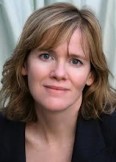
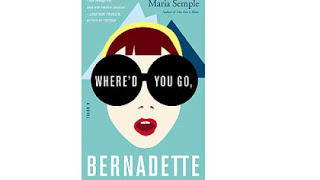
First, there is the website of Maria Semple. It's truly the funniest, funkiest, most original one I've seen, complete with dolls! Next, of course, is the book, Where'd You Go, Bernadette, which is rightfully racking up the raves. The author of This One Is Mine, Maria also worked in TV, writing for Beverly Hills 90210, Ellen, Mad About You and Arrested Development, and "bad shows" she won't name! Her new book is hilarious and so is she. How thrilled am I to have Maria here? I bet you can tell by the interview.
Emails, FB, twitter--all of these provide clues in your novel. So I take it you think social media is a boon? (Many writers hate it and think it takes away from writing.)
I included emails in Where’d You Go, Bernadette, but not Facebook updates or Twitter posts. In writing a modern day epistolary novel, I realized I needed people to communicate by email. But I’ve distorted reality by having my characters write long, formal emails. Personally, I find it tacky when novels include junky, fragmented communication, like texts, FB updates or Twitter. I’m seriously down on Twitter and about to quit Facebook. (I promised my agent I’d stay on it though the end of 2012.) In my slightly hysterical opinion, we writers have reached a crisis point. Publishers have instilled fear in us that we have to be on social media. I strongly disagree. Books sell the old fashioned way, by word of mouth. Literally, by people using their mouths to talk to their friends about a book they love. We all know that. Why are we succumbing to this insidious, energy-siphoning distraction?
You've hilariously skewered Seattle in your novel. Is Seattle on speaking terms with you? What made you change into someone who now likes the city?
I admit I was a little frightened that I’d be run out of town, but the reaction has been overwhelming. I get stopped on the street by people telling me how much they love Where’d You Go, Bernadette. It turns out Seattle is full of fellow transplants who had difficulty adjusting like I did. I began the book when I had just moved here and the culture shock (plus other factors) had me in a very bad way. Time passed, I made friends, and now Seattle feels like home. The book is ultimately a love letter to Seattle, and I’m glad to see that my affection shines though.
You've worked in comedy writing for a long time. Was it hard to switch over to writing a novel? Do you miss writing for TV?
I miss my fellow comedy writers, but not TV. I’ve discovered that I’m much more of a lone wolf than I previously thought. I like being in charge of my time. I need space to figure out if an idea leads anywhere, maybe by going on a walk, lying in bed and staring at the ceiling for an hour. (And if watching three straight episodes of Mad Men On Demand figures in somehow, who’s gonna stop me?)
The transition to fiction wasn’t as hard as I thought it would be. I was already a voracious reader and taught myself how to write prose by studying John Gardner’s The Art of Fiction.
I read that your first novel did fine, but it was nothing like the extraordinary sales and attention this one is getting. What's it feel like to now have this fame--what do you love, what annoys you about it, and what do you want much more of?
I think I’ve been around long enough, seen enough career highs and lows to recognize that this, too will pass. A shrink once told me that projects should be like a pearl on a necklace. That’s a powerful image to me, the string of pearls. The success of this book isn’t any more defining than the failure of my first book or any of the shows I worked on. What matters is to keep adding pearls.
If I may digress, that’s what I was trying to write about with Where’d You Go, Bernadette. It was about a woman who had a big success followed by tremendous failure. She was unable to get over it, and when the book begins, she’s been stuck, both creatively and as a person, for twenty years. The novel ends with Bernadette’s promise to move forward. This is all an artist can do. Nothing else matters.
As for the annoyances and rewards… The very best part is sharing in the book’s success with those who helped me get here: my boyfriend, my agent, my editor, my publicist and the marketing team at Little, Brown. Everyone’s giddy and proud, and that feels wonderful. It’s also really cool to get to meet my literary idols and to even have some of them love my book. That is totally trippy, and something that still doesn’t compute. I got a fan letter a few weeks ago from Michael Frayn, whom I’m mad for. Unfortunately, the attention brings huge demands on my time. A ton of emails to answer, press interviews, essays to write, etc. So I’m kind of harried and dragging around, when I wish I could just relax and enjoy.
I have to ask you about your website, which is one of the most creative, hilarious ones I've seen, with a definite doll motif. Your idea?
I’m so glad you like it! When it came time to do a new website, I talked to a few designers who all had the same idea, which was to use the cover art as a starting point and go from there. I love my cover, but I was itching for something weirder. One day, I was lounging on my seven year old daughter’s bed, brainstorming, and she said, “You can use my dolls.” She handed me a plastic doll whose hair was pulled back in an adult-sized hair elastic so its pony-tail shot straight out. “This can be you.” I totally cracked up. And I thought, “Hey, yeah, that can be me.” (It’s the doll on my bio page.) So Poppy and I worked together and figured out how many different types of dolls she had, and then assigned them to the various pages. Everything you see on the website we already had around the house with the exception of Bernadette’s fishing vest, which we bought on eBay. Poppy set up the dolls and I took the pictures. A wonderful graphic designer, Brian Chonjowski, figured out the aesthetics and put it together.
What's obsessing you now?
How I seem to be the only one alarmed by the way writers are embracing Twitter.
What question should I have asked that I completely forgot?
I showed this to my daughter who’s been hanging on my desk, waiting for me to finish up. She said, “What are you making for dinner?” I’m not sure the answer is going to be of broad interest, but here it is: “A chopped salad of parboiled green beans, yellow peppers, tomatoes and garbonza beans with fresh mozzarella and a lemon basil vinaigrette.”
Thank you, Caroline. This was a blast. I’m off to chop!
Published on September 14, 2012 07:27
September 12, 2012
Come see Alice Eve Cohen's play based on her breathtaking memoir, What I Thought I Knew. And if you can't get to see it, read all about it here!


What I thought I Knew by Alice Eve Cohen is not only "Everything we love in a book--profound, honest, hilarious, humane, surprising" Anne Lamott, Salon.com BEST BOOKS OF 2009, but it's now a one woman show in NYC! I'm thrilled to be going to see it, and if you want tickets, scroll down to the bottom. I loved the book, and I'm honored to have Alice here to talk about moving from novels to plays. Thank you, Alice!
What made you want to adapt your memoir for the theater? Had you ever done anything like this before? My memoir begins, “This was going to be a solo show. That’s what I do. ” I’ve written many plays and solo theatre pieces before. But at that time, the story was still so confusing and scary to me that I couldn’t talk about it, no less perform it in front of an audience! I needed to write the book in order to figure out what happened and make sense of it. Writing is such a private experience. Performing is very public. After sharing the story publicly as a memoir - which was a very joyful experience - and after getting such a positive response to the book, I was ready to turn it into a performance piece.
Were you panicked or exhilarated or both?
Creating the solo show has been exhilarating. Before I started writing the book I did feel panicked, really terrified about telling the story at all. Once I came out of the closet with my story, when the book was published, I remembered the profound pleasure of sharing a story with an audience. To a great degree, my new solo show is about the act of storytelling, and about the essential humanity of storytelling.
What was the writing process like? What surprised you about it?
I spent a year writing the script, adapting my memoir as a play. It was the first time I’d ever adapted a book for theatre, and what surprised me most was how much I had to cut! My first draft took over three hours to read aloud, so of course I had to go back to the drawing board! The show now runs 90 minutes. A script has to be much more spare than a book. The rich descriptive detail that’s essential for a book has to be reimagined without words in performance. Physical and vocal choices replace descriptions of characters and settings. A book communicates exclusively through words on a page, whereas a performance communicates a story through a variety of senses.
What made you decide to do the performing yourself and what's that like?
I’ve always loved performing! I’ve written and performed solo theatre for years, and it’s a joy. Solo performance allows you to play multiple characters, which is just ridiculously fun. I play forty characters in this show! There are serious scenes and comic scenes. I get to take the audience on a journey with me. As a solo performer, you have a very direct engagement with the audience, which is deeply gratifying. I teach solo theatre and playwriting at The New School; in the play, there are several scenes in which my students are discovering the stories they want to tell and how they want to perform those stories. It’s thrilling to bring all these stories to life on the stage.
What was it like working with a director?
My wonderful director, Elizabeth Margid, is a long-time collaborator. She’s directed two of my plays before this: a solo show called THIN WALLS, and a children’s play called HANNAH AND THE HOLLOW CHALLAH. Collaboration is one of the great joys of making theatre. Writing – whether a book or a script – is a solitary endeavor. We writers go into our writing caves for long stretches of time, and it can be, well, pretty lonely. Getting into a rehearsal space with a director is the reward for all that solitary script writing. I’ve had a chance over the past year to do some in-progress showings of the piece—at residencies at University of Michigan, the Virginia Center for Creative Arts, and the Voice and Vision Theatre’s Envision Retreat. Each time I show the piece to an audience and get feedback from my artistic collaborators, the piece grows and deepens. This summer I went into full-time rehearsal, which has been a deeply fulfilling experience.
What question didn't I ask that I should have?
Caroline, you ask the most wonderful questions! If I could add a few pragmatic questions, they would be:Q: How can you see a performance WHAT I THOUGHT I KNEW?A: There are two performances: Sat 9/15 at 4:30, and Fri 9/28 at 7pm, at the Cherry Lane Theatre in NYC – All For One Theatre Festival. Info about the show and tickets athttp://www.afofest.org/shows/what-i-thought-i-knew/ Use discount ticket code AFOTM12 for $20 tickets. More information on my website – www.AliceEveCohen.com
Q:Will the show have future performances?A: Yes! The play will have a three-week mainstage production in June at beautiful Kitchen Theatre in Ithaca, NY – which has produced my plays in the past – and it will be presented by the Hudson Opera House in Hudson, NY and the RVCC Theatre in NJ. I hope to tour the show, and I’d also be thrilled to have other actors perform the play.
Published on September 12, 2012 12:57
September 11, 2012
Joan Frank talks about Because You Have To: A Writing Life
I love books on writing. I have a garden of them by my desk, but Joan Frank's is something special. Deeply personal and enormously practical, it gets at the beating heart of what it really means to be a writer. Joan's not only the author of five books of fiction, she was also a finalist for the California Book Award, a MacDowell Colony Fellow, a Pushcart Prize nominee, and winner of the Dana Award, Michigan Literary Award, Iowa Writing Award, and Emrys Fiction Award. I'm thrilled Joan agreed to write something for the blog.
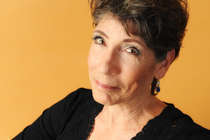
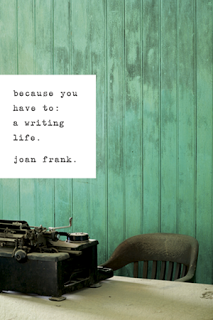
I have a new book of essays out of which I'm crazy-proud, called BECAUSE YOU HAVE TO: A WRITING LIFE (University of Notre Dame Press).Full disclosure: It took almost ten years to get this collection published. I'd begun the search under the fond eye of its ad hoc editor, my then-best friend, who died in 2003.Shaken, not yet defeated, I went on: searching like Diogenes for a publisher.Further disclosure: I do not have a literary agent, for the simple reason that none has yet been able or willing to sell my work. All my books have appeared through the brilliant, gracious generosity of small, literary presses.Without an agent, I knew that major publishers were ruled out as targets. So I sent BECAUSE YOU HAVE TO to every small press I could locate.I learned then that writing that's about writing can be harder to sell—rather, place—than other kinds. Perhaps it seems too solipsistic to editors, too narrow or incestuous. "Hey, Joan. As a general rule we don't do writers writing about writing on the [New York Times] Lives page," its editor once dryly advised me.
And yet the squirmy fact is, more and more space—virtual, aural, paper—is filled by writing that's about writing. The nation's larded with creative writing programs whose teachers talk and write and assign books about writing all the time. On Facebook and other social media, we're avalanched by writerly news and reflection.Why?Because it gives relief. Writing's a stunningly lonely gig that—paradoxically—aims for connection. "Hitting people's hearts," is how Tim O'Brien put it. But connection occurs privately, silently, often at great distance in time and space from the work's originator.So we write, in the present, about how it feels to write. About what the act teaches us. About anguish, stuckness, the jackpot, the abyss. Surprises, insults, windfalls. Conversely, we read such writing for guidance, inspiration, and to compare.We also sense a creepy inversion: that the actual writing product—stories, novels, memoirs—may stand in danger of becoming eclipsed by its by-product: the guidance, meditation, craft and gossip books. One hopes not. But the impulse to write about writing (and the appetite for reading it) feels inextinguishable. It consoles us like little else to think with pen or keyboard about what has happened to us; to sift that experience for patterns and meaning. If rejection has ground us to paste, if envy has snaked poison through our veins, if we're so broke we're living on yogurt—or if we're floating in a fugue state, or on fire with the joy and grace of getting it right—what's more logical and satisfying than to shape these passionate discoveries into a series of written pieces?That's how it worked for me, anyway. And as a whole, BECAUSE YOU HAVE TO feels like a completion, a finishing gesture: a kind of coda to a long period of lived trials and triumphs. But in no way, friends, does it finish a writing life. That won't end until I do!
Published on September 11, 2012 13:56
September 4, 2012
Writer Scams, anyone?
Writers work really, really hard, and most of us don't have Donald Trump sums of money (not that we'd ever WANT to be that idiot, but you know what I mean.) So why scam us?
This morning I received the following email, which really made me initially excited. I've been a keynote speaker a few times, and loved it, and I have invitations already lined up for next year's Isadora Duncan Long Scarf and Old Gringo Boot Tour of Is It Tomorrow. So it seemed possible that someplace would contact me. Here's the letter.
Tue, 4 Sep 2012 06:42:10 -0700
> Subject: KING'S COLLEGE INVITATION.
> From: kingscollegecampusseminar@gmail.com
> To: carleavitt@hotmail.com
>
> Respected Caroline Leavitt,
>
> I am Prof. Clive Rupert from King’s College Campus Here in London UK.
> We want you to be our guest Speaker at this Year King’s college
> Seminar which will take place here in UK. We are writing to invite and
> confirm your booking to be our guest Speaker at this year’s event.
>
> King’s College Campus.
>
> The Venue as follows:
> VENUE: King’s College campus in Strand
> London, United Kingdom
> POST CODE:WC2R 2LS
> Expected audience: 850 people
> Duration of speech per speaker: 1 Hour
> Name of Organization: King’s College Campus.
> Topic: ”Mystery of Life and Death”
> Date: 29th October 2012
>
> We came across your profile on http://www.pw.org// and we say it’s up
> to standard and we will be very glad to have such an outstanding
> personality in our midst for these overwhelming gathering.
> Arrangements to welcome you here will be discussed as soon as you
> honor our invitation. If you have any more publicity material, please
> do not hesitate to contact us.
>
> A formal Letter of invitation and Contract agreement would be sent to
> you as soon as you honor our Invitation. We are taking care of your
> travel and Hotel Accommodation expenses including your Speaking Fee.
> If you will be available for our event, include your speaking fees in
> your email so it can be included in your CONTRACT AGREEMENT.
>
> Stay Blessed
> Prof. Clive Rupert
> King’s College Campus.
Of course I excited emailed everyone at Algonquin, and then (I think it was the "Stay Blessed" sign-off that got me thinking), looked this up online. Turns out it is a new scam making it's way through the writerly community. Eventually, they ask for your passport and for a credit card and bank information. So now I am embarrassed that I was caught up in this, furious at them, and sad. Really? We're doing scams on novelists, now?
Sigh.
This morning I received the following email, which really made me initially excited. I've been a keynote speaker a few times, and loved it, and I have invitations already lined up for next year's Isadora Duncan Long Scarf and Old Gringo Boot Tour of Is It Tomorrow. So it seemed possible that someplace would contact me. Here's the letter.
Tue, 4 Sep 2012 06:42:10 -0700
> Subject: KING'S COLLEGE INVITATION.
> From: kingscollegecampusseminar@gmail.com
> To: carleavitt@hotmail.com
>
> Respected Caroline Leavitt,
>
> I am Prof. Clive Rupert from King’s College Campus Here in London UK.
> We want you to be our guest Speaker at this Year King’s college
> Seminar which will take place here in UK. We are writing to invite and
> confirm your booking to be our guest Speaker at this year’s event.
>
> King’s College Campus.
>
> The Venue as follows:
> VENUE: King’s College campus in Strand
> London, United Kingdom
> POST CODE:WC2R 2LS
> Expected audience: 850 people
> Duration of speech per speaker: 1 Hour
> Name of Organization: King’s College Campus.
> Topic: ”Mystery of Life and Death”
> Date: 29th October 2012
>
> We came across your profile on http://www.pw.org// and we say it’s up
> to standard and we will be very glad to have such an outstanding
> personality in our midst for these overwhelming gathering.
> Arrangements to welcome you here will be discussed as soon as you
> honor our invitation. If you have any more publicity material, please
> do not hesitate to contact us.
>
> A formal Letter of invitation and Contract agreement would be sent to
> you as soon as you honor our Invitation. We are taking care of your
> travel and Hotel Accommodation expenses including your Speaking Fee.
> If you will be available for our event, include your speaking fees in
> your email so it can be included in your CONTRACT AGREEMENT.
>
> Stay Blessed
> Prof. Clive Rupert
> King’s College Campus.
Of course I excited emailed everyone at Algonquin, and then (I think it was the "Stay Blessed" sign-off that got me thinking), looked this up online. Turns out it is a new scam making it's way through the writerly community. Eventually, they ask for your passport and for a credit card and bank information. So now I am embarrassed that I was caught up in this, furious at them, and sad. Really? We're doing scams on novelists, now?
Sigh.
Published on September 04, 2012 09:01
Deanne Stillman talks about Desert Reckoning, cop killing, cowboys and Indians, and more

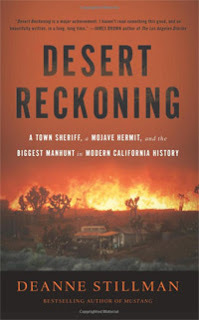
Deanne Stillman's Desert Reckoning: A Town Sheriff, a Mojave Hermit, and the Biggest Manhunt in Modern California History is knockout. Based on her Rolling Stone piece, "The Great Mohave Manhunt," which was also a finalist for a PEN Center USA journalism award, and which also is in the Best American Crime Writing of 2006, the book is about a fatal, tragic manhunt. Deanne has written for Rolling Stone, The New York Times, The Los Angeles Times, Playboy and more. She covered the Robert Blake case for Rolling Stone and the Phil Spector case for Spin and UK Independent. She also blogs for the Huffington Post and has written for TV and film, adapting her book Twentynine Palms for Tristar. She's also the prize-winning author of the plays, Pray for Surf, Star Maps and Inside the White House. I'm honored to have her here.
What I loved so much about your book is that it reads like a novel, with exquisite detail, especially with the Mojave desert. Did you yourself get to the desert?
I'm a long-time desert pilgrim and have been writing about the Mojave for years; I was in the desert when this incident happened, at the home of photographer Mark Lamonica in the Antelope Valley, and we heard the sirens - many, many, many - and Mark encouraged me to look into the story. I don't do "where's the fire" kind of reporting" -although this story does end in a giant Old Testament-style conflagration - and I was in the middle of my previous book, Mustang: The Saga of the Wild Horse in the American West. But I began to look into the story and was soon drawn in, for the above-mentioned reasons. I called my editors at Rolling Stone and asked if they'd be interested in an article. They said yes and then it all went from there. I spent two years on the magazine piece and another six on the book.
Can you talk a bit about the tragedy of these two men?
Both of them had left the city years before their fatal encounter, heading into the desert for their own reasons. The hermit wanted to be left alone and live off the grid -although he did have a family and tried to reconnect with his son, and their story is part of my book - and critical to understanding what happened. The sheriff in his own way also wanted to be left alone, but he was tethered to society in many ways. He was married, had recently adopted a son before he was killed, very popular in the area. He was available 24/7 to anyone who needed him on his dangerous desert beat. Both Kueck (the hermit) and Sorensen (the sheriff) loved the desert; both loved animals and took care of wild creatures in need. But Kueck was a Dr. Doolittle with an assault rifle; he had done time and vowed never to go back to jail. He was melting down in the desert and woe to the cop who crossed his line in the sand. Strangely, he and Sorensen had had another explosive encounter in the desert years before the final one, hence my title, Desert Reckoning. The law wanted to make Kueck a cautionary tale for others.
Why would they fear someone outside the grid so much? Why did they think one man could have so much power? Do you think America has room for sub-cultures? (I'm hoping your answer is yes) or is this a losing battle?
Well, you can't kill a cop and get away with it - or at least you're not supposed to. It's not that they thought one man had so much power; they really didn't know who or what they were up against, as Lt. Bruce Chase told me, a member of the SWAT team at the time, "it was like chasing a ghost." Throughout the week of the manhunt, they didn't see Kueck, only heard of sightings. Also they weren't trained for desert tracking; at the time the LA County Sheriff's Department was primed for urban warfare. in this part of the desert you are totally exposed; Kueck knew the desert and its ways as I recount in my book, and they didn't, that did give him a lot of power and enabled him to fend off thousands of cops and high-tech gear coming out of the Gulf War for seven days. For sure, America has room for sub-cultures. Our great wide open may be vanishing along with all who make their homes there, including plants and animals, but there are still places where you can go and plant a "Don't Tread on Me" flag or sign- as Kueck had done many moons ago.
What's obsessing you now and why?
It's a secret but I'll give you a hint: it involves cowboys and Indians and I'm going back into the frontier era when wild horses thundered across the plains...
Published on September 04, 2012 05:48

